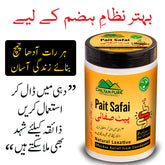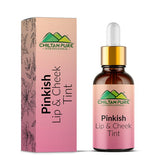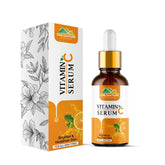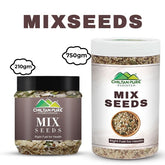INTRODUCTION
Emblica officinalis Gaertn. or Phyllanthus emblica Linn, commonly known as Indian gooseberry or amla, is arguably the most important medicinal plant in the Indian traditional system of medicine, the Ayurveda. Various parts of the plant are used to treat a range of diseases, but the most important is the fruit. The fruit is used either alone or in combination with other plants to treat many ailments such as common cold and fever, and are useful in hemorrhages, diarrhea, dysentery, anaemia, jaundice, dyspepsia and cough. Amla is also reported to possess radiomodulatory, chemomodulatory, chemopreventive effects, antimutagenic properties that are efficacious in the treatment and prevention of cancer. Amla fruits are commonly used to preserve (murabbas), pickles, candy, jelly and jam. Besides fruits, leaves, bark and even seeds are being used for various purposes. Some of the products are made using Amla are Chyawanprash, Triphala churna (mixture of Amla, Terminalia chebula and T. bellerica), Brahma Rasayana, Madumegha churna.MORPHOLOGY
Amla are small, round berries with light-green skin. The skin is almost translucent, with 6 to 8 faint yellow striations, making the Amla appear to be segmented. The skin is tough, yet thin with a flesh that is crisp and juicy with a taste both sour and bitter. The flesh of an Amla is also somewhat astringent. In the center of the berry lies a hexagonal-shaped stone with 6 small seeds.AVAILABILITY
Amla is available during the winter months.GEOGRAPHY
Amla is native to the subtropical South Asian countries of India, Pakistan, and Bangladesh. It is grown in topical desert areas of India and is commercially produced in northern India. It is revered by the Hindu and its use has been woven into religious rites and ceremonies. During World War II powder, candies and tables made from dried Amla were given to Indian soldiers as a vitamin C supplement.NUTRITIVE VALUE
The Indian gooseberry or Amla is abundant in vitamin C and vitamin A. It may also contain possibly high levels of folic acid and minerals like calcium, potassium, phosphorus, iron, carotene, and magnesium. Amla are low in calories, with 100 grams of the fruit containing only 44 calories, according to the USDA National Nutrient Database. Fresh Indian gooseberries contain more than 80 percent water, in addition to protein, minerals, carbohydrates, and fiber. Their beneficial properties are mainly due to their rich antioxidant content.CHEMICAL COMPOSITION OF AMLA
Amla is one of the most extensively studied plants. Reports suggest that it contains tannins, alkaloids and phenols. Fruits have 28% of the total tannins distributed in the whole plant. The fruit contains two hydrolysable tannins Emblicanin A and B, which have antioxidant properties; one on hydrolysis gives gallic acid, ellagic acid and glucose wherein the other gives ellagic acid and glucose respectively. Activity directed fractionation revealed the presence of several phytochemicals like gallic acid, corilagin, furosin and geraniin. Flavonoids like quercetin, alkaloids like phyllantine and phyllantidine are also found. Its fruit juice contains the highest concentration of vitamin C which is more than those present in oranges, tangerines and lemons.
TRADITIONAL USES
In traditional Indian medicine, dried and fresh fruits of Amla plant are used. All parts of the plant are used in various Ayurvedic medicine herbal preparations, including the fruit, seed, leaves, root, bark and flowers. According to Ayurveda, Amla fruit is sour and astringent in taste with sweet bitter and pungent secondary tastes. Its qualities are light and dry, the post digestive effect is sweet and its energy is cooling. Controls Cholesterol Level: It strengthens the heart muscles and causes a significant decrease in total cholesterol, LDL cholesterol, VLDL cholesterol and triglycerides. A 500 mg capsule of dried Amla powder can be added to your daily routine after consulting with doctor. Treats Hypertension: High vitamin-C helps control blood pressure. Triphala, a combination of Amla and two other herbs is an excellent medication for high blood pressure. Natural Cure for Anemia: Amla is rich in Vitamin-C or ascorbic acid, an essential ingredient that helps in the absorption of Iron. Herbal Cough Remedy: Add a teaspoon of Amla juice or powder to a glass of warm milk and drink this thrice a day. This will clear an unpleasant throat, adding some ghee to this decoction will clear a cough. Mix Amla powder with honey and suck this mixture twice a day to cure a chronic dry cough. Amla is invaluable in the treatment of tuberculosis, asthma and bronchitis. Natural Eye Tonic: Fresh Amla juice or dried Amla capsules are a good supplement to improve near-sightedness, cataract and glaucoma. It reduces intra ocular tension and corrects the vision. Promotes Hair Growth: Dried Amla fruits are boiled in coconut oil and then ground to form Amla oil. This is a very effective conditioner and prevents balding and greying of hair. For oily hair, mix half a cup of Amla juice, half a cup of lime juice and some water. Apply this to make an anti-grease hair wash. A Pitta Pacifier: Amla boiled in coconut water and the ground mixture is applied to the scalp. Amla oil is an excellent way to reduce heat associated with summer season. It is a good remedy to pacify pitta conditions. Treats White Spots On The Nails: As a source of Vitamin C, serves as an effective remedy in vitamin deficit condition. Addition of Amla juice/powder in diet overcomes this condition. Remedy for Menstrual Disorders: White discharge can be relieved with powdered and dried Amla Seeds. Mixture of Amla with honey and saunf (fennel) or mixing it with squished banana and consumingOTHER USES OF AMLA
- It helps in regulating blood sugar.
- Phyllemblin, obtained from fruit pulp has been found to have mild depressant action on central nervous system.
- It is a good liver tonic
- Good demand from the industries for the preparation of various health care products also like hair oil, dye, shampoo, face creams and tooth powder.
- Commonly used in inks, shampoos and hair oils, the high tannin content of Indian gooseberry fruit serves as a mordant for fixing dyes in fabrics.
- Skin: In addition to its antioxidant activity, Indian gooseberry may help prevent the breakdown of collagen, which forms the firm but flexible protein matrix in your skin and soft tissues.
- Hair: Amla extract is commonly used in Thailand to promote hair growth, and some evidence shows that it may inhibit an enzyme that contributes to hair loss.
- Vision: Indian gooseberry extract protected against age-related macular degeneration (AMD) by improving the mitochondrial health of eye cells.
USE OF AMLA IN YOUR DAILY ROUTINE
Amla can be eaten fresh, though the bitter taste is better offset with a sprinkle of salt. To rid the berries of their bitter flavor, soak them in salt water before preparing. Traditionally used in India for pickles and chutneys, the Indian gooseberry has both sweet and savory applications. Amla murabba is a sweet preserve served with Indian flatbread. Amla can be baked into tarts or the juice used as a flavoring for vinegars and marinadesFREQUENTLY ASKED QUESTIONS (FAQS)
How many amla should be eaten in a day? You can have 1-2 amla per day in the form of juice or even raw. However, it is always recommended to consult a doctor before you start eating it. Amla shouldn’t be consumed if you are pregnant, breastfeeding or have been diagnosed with low blood sugar levels. What are the benefits of eating amla? Adding amla to your daily diet is a great way to get maximum benefits. Amla helps to improve immunity, aids in weight management, prevent viral infections, is a natural blood purifier, relieves pain, etc. Does amla have any side effects? There are certain aspects that you should consider before including amla in your daily routine. It can increase the risk of bleeding disorder in people if you are already diagnosed with it. It can also lower your blood sugar level. So, people with diabetes should consume this upon consulting their doctor. What is the best time to eat amla? Obtain the maximum benefits of amla by having it early in the morning on an empty stomach. Is amla good for weight loss? Amla accelerates metabolism and helps you to burn calories. To start off your day, drink a glass of amla juice in the morning as a natural detoxifier. Who should not consume amla? Pregnant and breastfeeding women or people with diabetes should avoid having amla. Does amla reduce blood pressure? Yes, the antioxidants and high potassium content in Amla helps in reducing blood pressure. Consuming it with one teaspoon of raw honey is exceptional for blood pressure management. How is amla good for hair? The high iron and carotene content boosts hair growth and strengthens hair. Is amla good for fatty liver? The antioxidant properties of Amla make it fit for people who have fatty liver and a weak digestive system.
Tags:




![Red Onion Oil 🧅 Reduces Hair Fall & Accelerates Hair Regrowth [پیاز کا تیل].. Trending.... 🔥 - ChiltanPure](http://chiltanpure.com/cdn/shop/products/red-onion-oil-reduces-hair-fall-amp-accelerates-hair-regrowth-piaz-ka-til-trending-394813_165x.jpg?v=1707464619)
![Red Onion Oil 🧅 Reduces Hair Fall & Accelerates Hair Regrowth [پیاز کا تیل].. Trending.... 🔥 - ChiltanPure](http://chiltanpure.com/cdn/shop/products/red-onion-oil-reduces-hair-fall-amp-accelerates-hair-regrowth-piaz-ka-til-trending-329640_165x.jpg?v=1708127491)














